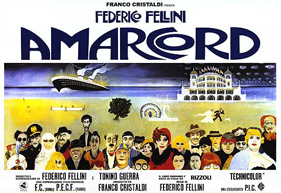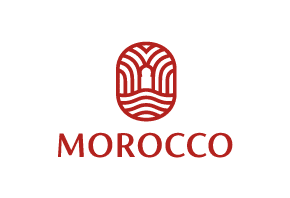Meet Romagna’s cast

A wealth of food and wine and Roman roads led to riches fought over by big characters
From time immemorial to the present day, Romagna has been the playground of larger than life characters who have left their colourful impressions for us all to enjoy.
And, in Romagna they are very much larger than life. From the feisty much-married empress to the hunchback baron murderer through young and old married in love, the ‘Devil Wolf of Rimini’, the Fascist King and the film fun pair – they all have left their mark for all to see and have really colourful Romagnolo stories to tell…
Feisty empress with an astonishing 1500-year-old legacy
The powerful Galla Placidia, based in Ravenna, was empress of the Western Roman Empire in all but name from 423 until her death in 450. Her life was a story of defeats and victories, exiles and glorious homecomings, disasters and triumphs. Although betrothed early and twice married, her true love story was with the man she eventually married – Emperor Constantius III who tragically only reigned for 7 months before his death.
The architectural legacy that she created in Ravenna includes San Giovanni Evangelista, Ravenna which she built in thanks for the sparing of her life and those of her children in a storm while crossing the Adriatic Sea, her Mausoleum in Ravenna, a sublime work of art, described by UNESCO experts as "the earliest and best preserved of all mosaic monuments, and at the same time one of the most artistically perfect". It is an astonishing work, simple outside and a real glistening jewel-box inside – the colours so bright it is as though the mosaics were created yesterday.
One more legacy of this feisty, passionate, liberated woman: On a visit to the hills she was given a glass of wine in a vineyard. "This wine is so good it should be drunk in gold" she is said to have commented. The wine Albana DOCG, the place Bertinoro (drunk in gold in Romagnolo).
Hunchback baron murders wife and brother in historic power-play jealousy
The Malatestas were the Borgias of Romagna. Powerful, wealthy, ruthless. soldier barons who ruled most of the territory for around 200 years from 1295. At the height of their power, in 1285, the eldest son Gianciotto (Giovanni the Lame) was betrothed to the glorious Francesca da Polenta. Because Gianciotto was so ugly, his brother Paolo (the Fair) took his place in all the arrangements preliminary to the marriage – naturally Francesca fell in love with him. Even though Paolo was married too, the affair carried on for 10 years – until Giancotto discovered the pair in flagrante, and killed them both.
The bloodthirsty story of the conspiracy and the jealous murder was covered by Dante (who know Francesca) in the ‘Inferno’ book of his ‘Divine Comedy’ classic. According to Dante whereas Francesca and Paolo are in the second circle of hell (for their adultery) Gianciotto is further in, being boiled in his own blood for eternity. Clearly, Dante is on the side of Francesca, partly due to the fact that the couple were reading the love story of Lancelot and Guinevere when they first kissed.
Anyway – the whole story spawned a great deal of wonderful art and literature, and you can still visit the splendid castle where the love and murder scene took place – Gradara. Gianciotto, the wife-and-brother-killer eventually met his own unsavory death in the dungeons of Torriana Castle.
The devil-wolf of Rimini woos wife with art
By the time Sigismondo Pandolfo Malatesta (known as the Wolf of Rimini) became Lord of Rimini in 1432, his family had been in power for well over a century – and had gotten a pretty gory reputation, which didn’t stop Sigismondo making it worse.
He was widely considered by his contemporaries to be one of the most daring and ruthless military leaders in Italy. By his enemies – who included Pope Pius, Federico di Montefeltro, the Duke of Milan and the King of Naples – he was considered an out and out devil.
Married at least 3 times and with numerous lovers and illegitimate progeny, Sigi was accused of incest, rape sodomy, infanticide, adultery, murder and treason amongst many other sins. His image was burnt publicly in Rome and in an unique ceremony, the pope canonized him to hell with the curse, "No mortal heretofore has descended into Hell with the ceremony of canonization. Sigi shall be the first deemed worthy of such honor."
On the other hand, he was an enormous patron of the arts in Romagna, wrote a number of sonnets to his lover (later to be wife) Isotta degli Atti, who bore him four children. Moreover the great work of Renaissance art in Romagna – the Malatestina Temple, was created by Sigi to honour Isotta.
Mussolini – It could have turned out so well
A classic Romagnolo man, Benito Amilcare Andrea Mussolini was born in 1883 in Predappio, a village just outside of Forli, his parents -Alessandro, a blacksmith and socialist and Rosa, a devout catholic schoolteacher. By the time he was 30 he was in the highest echelons of the Italian Socialist Party, then expelled within a year because of his support of the war against Austria. Returning, wounded from the war, he got his start in politics with a fabulous weekly wage of £100 (€10,000 today) from the British MI5.
Mussolini went on to form the Fascist party, which strutted around Italy and engaged local violence and in the war alongside Hitler and Franco. ‘Il Duce’ ended up arrested by the Italians, rescued by the Germans ultimately being shot with his mistress and finally hanging upside down from meat hooks in a Milan petrol station.
One of his legacies is an architectural style. In Forli, a ceremonial way and various public buildings were created in a Totalitarian style in deference to Mussolini, also, the Romagna coast is dotted with ‘Colonia’ vast neo-classical buildings for healthy holidays and exercise for young Fascists.
Film fame fun for Romagnolo pair
One of the world’s greatest film directors came from Rimini and his collaborator the great screenwriter Tonino Guerra, came from Santarcangelo just 10km away.
The flowering of these two massive talents in the enormous global popularity of postwar cinema was world-changing.
La Dolce Vita, Satyricon, 81/2, Fellini’s Casanova, and a dozen more great films attest to the artistry of this great filmic genius.
And Tonino Guerra, wrote screenplays for such classics as Blow Up, Lucky Luciano, Catch as Catch Can, and many more.
But their great collaboration was on Oscar-winning Amarcord which derives its story from their Romagnolo youth in Rimini.
And, like other Romagnolo characters, they refuse to be defined by their medium.
Guerra, Italian concentration camp survivor, poet, writer and screenwriter, sculptor, mosaicist, creator of fantastic public works: Fellini, film director, scriptwriter, artist, caricaturist, joke-writer, journalist.
Both were truly Romagnolo – argumentative, passionate, hospitable, big-hearted bon viveurs.
Valere Tjolle
@ValereTjolle
More about Romagna HERE www.bestofromagna.com
Interested in jumping out of the tourism box and moving to a world beyond commodity tourism? Envision a world beyond tourism
 United Kingdom
United Kingdom United States
United States Asia Pacific
Asia Pacific












































BA suspending all Heathrow to Abu Dhabi flights
Unexpected wave rocks cruise ship
Report: Cruise guest died after ship lashed in heavy storm
British teen in serious condition after paraglider collision
JetBlue scraps London Gatwick flights